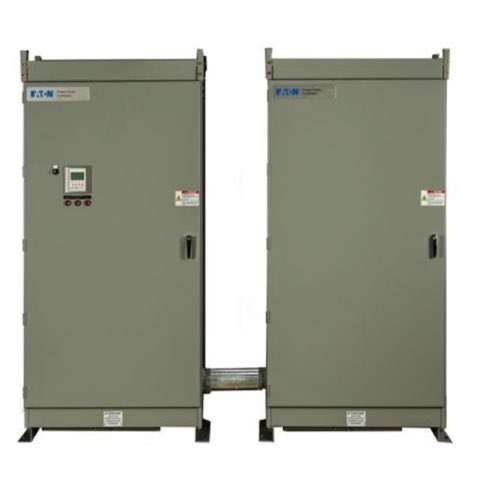Capacitor Banks

Capacitor banks are pivotal components in contemporary electrical systems, particularly serving the crucial roles of enhancing power factor and voltage stability. When utility and industrial facility electricians integrate capacitor banks into a facility's power architecture, these devices chiefly serve to dampen reactive power demand.
In intricate electrical systems, capacitor banks are made up of numerous capacitor units that can be brought into the circuit manually or automatically depending on load variations. These units can be set up for low- or medium-voltage applications and are frequently positioned in substations or larger facilities in key parts of the system. Besides voltage support and reactive power compensation, capacitor banks assist in the overall performance and reliability of the system. When functioning together properly, these units help supply a balanced and efficient power system, reduce unnecessary energy losses, and ensure the long-term stability of the electrical grid.
FAQs
Do power factor correction capacitors supply reactive power that compensates for lagging current caused by inductive loads in an electrical power system?
Yes, power factor correction capacitors supply reactive power that compensates for lagging current caused by inductive loads in an electrical power system.
Do shunt capacitor banks store electrical energy and provide improved power factor correction?
Yes, shunt capacitor banks store electrical energy in the form of reactive power and provide improved power factor correction in electrical systems.
Do capacitor banks play a role in voltage regulation and harmonic filtering?
Yes, capacitor banks play a role in voltage regulation and, when designed with filtering components, can also assist in harmonic filtering to improve power quality.
Differences Between Power Supplies, Inverters and Transformers
Power Supplies and Power Quality
A power supply converts one type of power to another. The most common example is a power supply that takes AC voltage and converts it to DC voltage. While it is very common to use power supplies in industrial applications, one very common place to see a power supply used is for the devices such as: smartphones, laptops or tablets. Most devices come with a power cord that has a bulky block on the end of it. This block is where the power supply is located. Most devices do not use AC power, which is the type of power being supplied to homes. They use some form or DC power. The power supply changes the AC voltage to the correct DC voltage for the device.
Inverters
Inverters work in a similar way to power supplies, with one major difference, instead of converting AC power to DC power, the inverter does the opposite. It converts DC power to AC power. DC power is created by devices such as solar panels or batteries, but most homes require AC power. To convert the DC power that is generated by the solar panels, an inverter is used.
Transformers
Transformers convert one type of AC power to a different type of AC power. For example, homes commonly use 120 VAC and automatic sprinkling systems have valves that require 24 VAC. A transformer converts 120 VAC to 24 VAC so the sprinkler valves can operate properly. Transformers come in many different shapes and sizes. and can convert AC power up or down.

